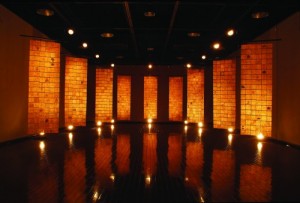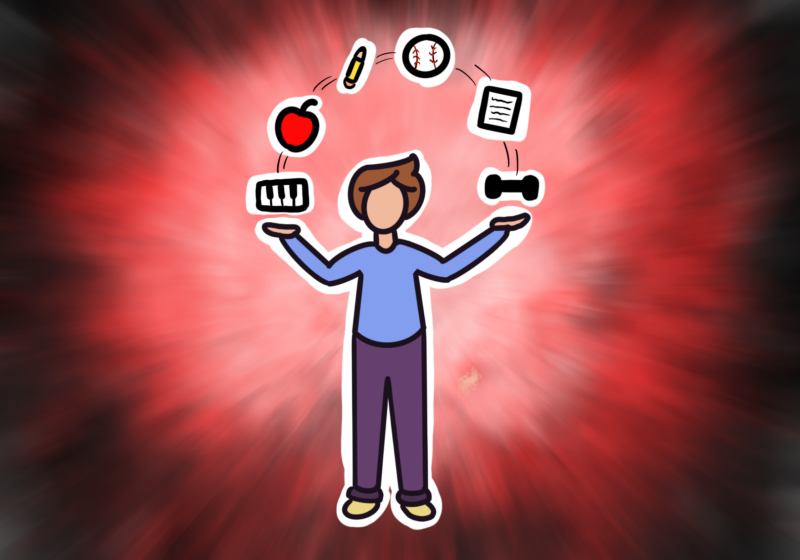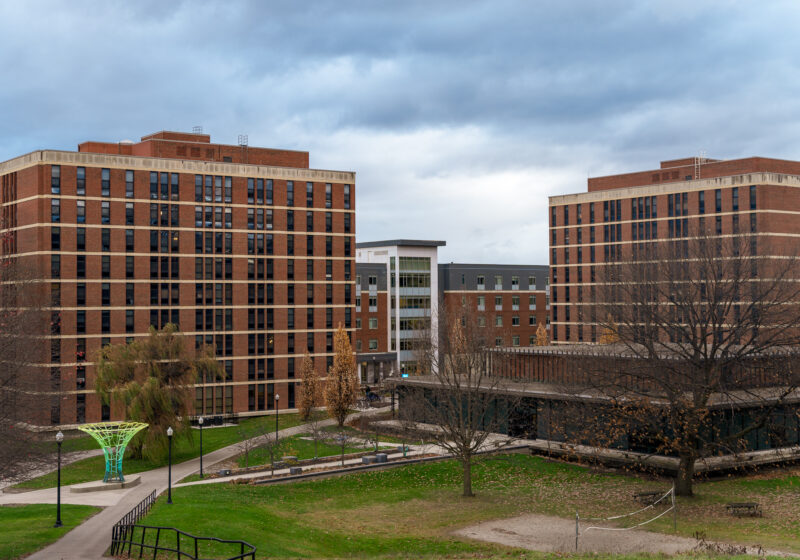Currently, on the tunnel level of Wilson Commons, strings descend into the student exhibition space known as the Hartnett Gallery. The Hartnett Gallery Committee curates their artistic corner of Wilson Commons year-round, showcasing artists both on-campus — through their undergraduate and faculty shows — and artists from across the nation. For this week’s Club Spotlight, Undergraduate Director and junior Colleen Kaster shares the inside scoop of the gallery, including her favorite moments with artists and what UR can expect from the Hartnett Gallery next.
What can you tell us about the current artist and exhibition in the gallery?
Currently, we are showing work by Naomi Kasumi, a Japanese artist who teaches at Seattle University. The show is called “MEM: memory•memorial” and is a combination of three pieces in her ongoing MEM project. The show emphasizes ritual and ceremony and is her memorial to her aborted child. The exhibition ends Sunday, Oct. 9.
How do you select the artists that go into the gallery space?
Each spring we get submissions from artists all over the country, and they go to one of our graduate advisers, who narrows them down to a reasonable number — usually 10 to 20. The committee members will then gather and discuss them and then choose who we’ll ask to come in and who we’ll put on backup.
We like to choose a variety of works — so we’re not showing all paintings or all sculptures — and things that will interest all different types of people around campus and around the city.
What is it like to work in the gallery and on the committe?
My favorite part about working on the committee would definitely be the interactions we get to have with the artists who we bring in, as well as helping them install their show. It’s a great experience with both sides.
What has been your favorite exhibition?
I’d have to say Annie Strader’s show, “Something is Always Far Away,” back in 2010. We brought in enough dirt to fill the entire floor, from where the stairs go down to the lower wooden area all the way to the corner of the triangle. We put down a tarp and just started bringing in these huge carts of dirt from a truck outside The Commons. It was probably the only time in my life where I’ll get to play barefoot indoors in a giant pile of dirt and start dirt wars with a professional artist.
What was the hardest installation that you’ve done?
Meg Mitchell’s installation of “Visualizing Difference (birds of a feather)” was probably the one that took the longest. We put together all these tiny, laser-cut wooden pieces into the big nests hanging from the ceiling.
Or it would be getting the dirt off the floor from Annie Strader’s de-installation. It was way less fun to shovel it out than to dump it in.
What are the positive and negative aspects of the space that you work with?
The triangular shape of the gallery is both a negative and positive aspect. It’s great, unique and fantastic for some installations, but for others it’s hard to work with the corner.
Do you find the artists hard to work with?
They’re usually great to work with. We keep in mind that it’s their exhibition, and we’re there to help them, so any weird installation request usually happens and ends up [being] worth it. The hardest part is communication before the show, when we have to rely on email and phone calls.
Can you give us a preview of the artist that will be featured next?
The next artist will be Rosalyn Engelman, a UR alumna, with an exhibition called “Echo Sonata,” a series of paintings which are inspired by her travel and study of Eastern traditions. It opens the Friday of Meliora Weekend with the artist talking about her work at 4 p.m., and a reception from 5 to 7 p.m. I’m pretty excited to see her paintings at full size.
Olfano is a member of the class of 2012.



